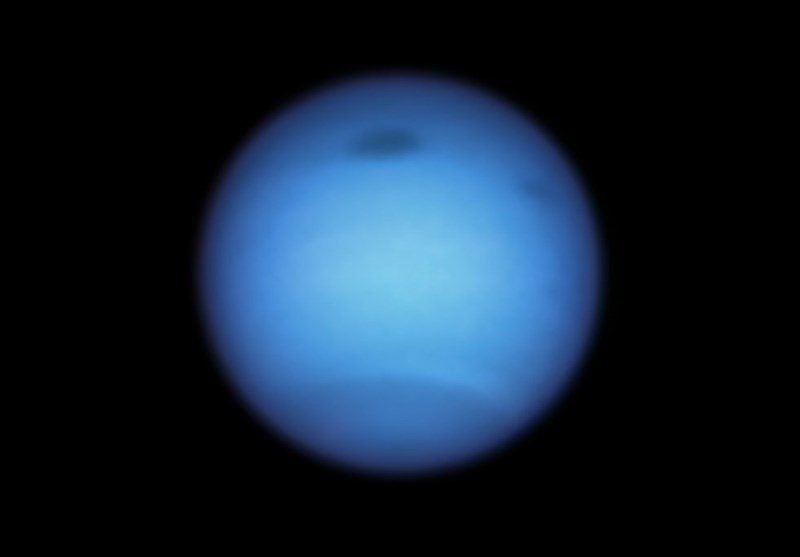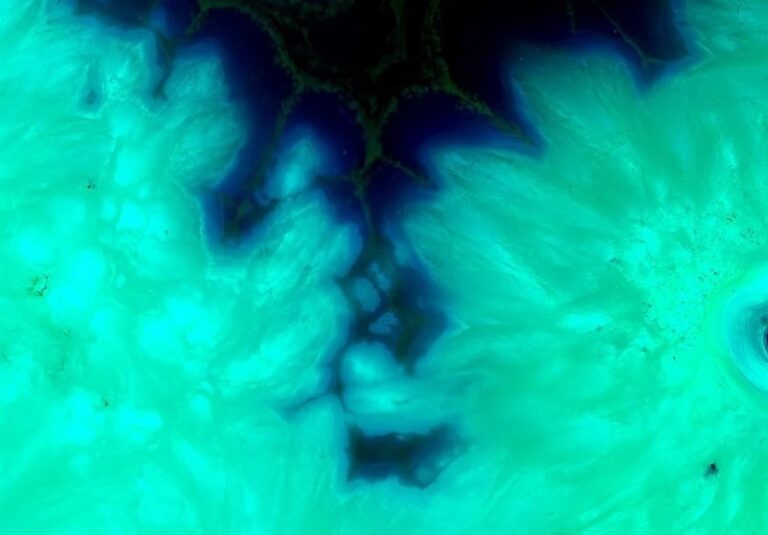Unlocking the Mysteries of Our Solar System: How Distant Icy Worlds Hold the Key
Exploration of the outer solar system is revealing essential insights into its history. Recent discoveries have shed light on the formation of distant icy worlds beyond Neptune, enhancing our understanding of the solar system’s evolution over time.
Led by scientists from the University of Central Florida (UCF), the research team utilized the advanced capabilities of the James Webb Space Telescope (JWST) to make groundbreaking findings. Their study focused on distant Trans-Neptunian Objects (TNOs), which are remote and frozen worlds. Through their observations, they uncovered unexpected patterns of methanol on the surfaces of these celestial bodies, providing a deeper connection to the origins of life itself.
The research revealed that TNOs can be categorized into two main groups based on the presence of methanol ice:
- Strong Methanol Traces: Some TNOs displayed significant amounts of methanol hidden beneath their surfaces.
- Weaker Methanol Signatures: Other TNOs, located farther from the sun, exhibited a lesser presence of methanol.
These differences suggest that cosmic radiation over billions of years may have altered the surface chemistry of these distant objects. For TNOs closer to the sun, methanol appears to be better preserved beneath the surface, shielded from harsh space weather. However, the outermost TNOs present new questions with their faint chemical signatures.
TNOs serve as ancient time capsules, representing some of the best-preserved remnants of the early protoplanetary disk—the gas and dust cloud surrounding the young sun. By studying these remote icy worlds, scientists are able to glimpse a time before planets formed.
Professor Noemí Pinilla-Alonso, formerly of the UCF Department of Physics and now affiliated with the University of Oviedo in Spain, played a pivotal role in this research. The project is part of the Discovering the Surface Compositions of Trans-Neptunian Objects (DiSCo) program. Pinilla-Alonso stated, “Methanol, a simple alcohol, has been found on comets and distant TNOs, hinting that it may be a primitive ingredient inherited from the early days of our solar system—or even from interstellar space.”
Moreover, methanol is not just a remnant of the past; it transforms into new compounds when exposed to radiation, acting as a chemical time capsule that reveals the evolutionary history of these icy worlds over billions of years. It is considered a vital building block capable of forming organic molecules like sugars, connecting frozen space chemistry to the fundamental components of life.
Pinilla-Alonso also noted that the spectral differences observed suggest that not all distant TNOs originated from the same set of ingredients. “What excited me the most was realizing that these differences were linked to the behavior of methanol—a key ingredient that had long been elusive on TNOs from Earth-based observations,” she explained.
The findings indicate that methanol is being destroyed on TNO surfaces due to irradiation but remains more abundant in the subsurface, where it is protected from exposure. To gain a clearer understanding of these phenomena, UCF Florida Space Institute researcher Ana Carolina de Souza-Feliciano played a crucial role by employing laboratory data and modeling to replicate methanol’s behavior in space.
“One of the biggest surprises came from the methanol behavior,” de Souza-Feliciano remarked. “From laboratory data, its signatures at shorter wavelengths differ from the fundamental ones in longer wavelengths.” This hands-on modeling allowed the team to connect their JWST observations to the actual chemistry of these remote bodies.
De Souza-Feliciano has previously collaborated on other DiSCo projects using JWST, helping to characterize binary objects and various distant TNOs. “The main DiSCo paper addressed the main characteristics of three groups of TNOs. This paper delves deeper into one of them, known as the cliff group, which is characterized by a spectral reflectance that does not increase after approximately 3.3 microns,” she explained.
The “cliff group” TNOs are particularly valuable as they include cold-classical TNOs, which are the oldest and least altered objects in the solar system. Understanding this group is essential for comprehending the outer solar system’s dynamics. “The cold-classical TNOs are the only dynamic group that probably remained in their original formation area from the solar system’s inception to today,” noted de Souza-Feliciano.
The research was conducted under the leadership of astronomer Rosario Brunetto at Université Paris-Saclay, in collaboration with Elsa Hénault and Sasha Cryan. The team believes that these findings will significantly alter our perspective on TNOs and provide guidance for future deep space missions.
Brunetto emphasized the broader implications of this research, stating, “This discovery not only reshapes our understanding of TNOs but also offers a crucial reference for interpreting JWST’s observations of other distant objects, such as Neptune Trojans, Centaurs, and asteroids, as well as for future missions exploring the outer solar system.”
Beyond its scientific relevance, the search for methanol in the solar system inspires curiosity and motivates new generations to explore the cosmos and understand the chemical evolutions occurring in space.






